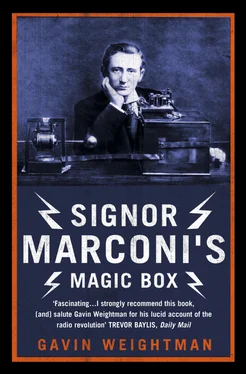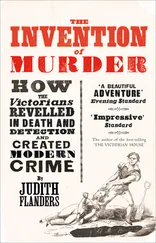From the day the races began on 3 October 1899 Marconi’s fame in the United States was assured. The unbelievable had been achieved. As the New York Times put it: “We at the latter edge of the nineteenth century have become supercilious with regard to the novelties in science; yet our languor may be stirred at the prospect of telegraphing through air and wood and stone without so much as a copper wire to carry the message. We are learning to launch our winged words.’ All the newspapers and popular magazines speculated on the future of wireless, the possibility of far-flung families being brought together, of peace descending upon the earth as nation talked to nation with a magic Morse key. And it would all be so much less expensive once the cable companies’ monopolies had been destroyed.
In New York Marconi demonstrated his equipment to the United States Navy, which at the time maintained a stock of carrier pigeons for long-distance communication. It went well, but despite enthusiastic reports by their observer on the Ponce, the naval authorities were not sure that wireless was worth the price Marconi’s company was asking, and chose to hedge their bets. Soon enough, they reasoned, American inventors would come up with their own version of wireless telegraphy. And in the middle of October, just as the America’s Cup was finishing, a notice appeared in a number of newspapers in New York to the effect that Marconi had infringed an American patent taken out as early as 1882 by a Professor at Tufts University in Boston, Amos Emerson Dolbear. This patent had been acquired by the Dolbear Electric Telephone Company of New Jersey in 1886, and then bought by a Lyman C. Larnard, who was now suing Marconi. Larnard wanted $100,000 for infringement of his patent, and for all Marconi’s demonstrations to be stopped. He told the newspapers that he had bought Dolbear’s patent in July 1899 expressly for the coverage of the America’s Cup, and that he had warned both the Herald and Marconi’s company that he would sue if they went ahead with their plans.
No notice was taken of this threat, for a brief look at the claim revealed that what Professor Dolbear had patented was the same effect of ‘induction’ that William Preece had used in England. Lyman C. Larnard had not grasped the difference between this and the use of Hertzian waves; but then, neither had anyone in the United States Navy, which would remain woefully ignorant of wireless technology for almost a decade.
There was for some years a confusion over the difference between the two methods of ‘wireless’ telegraphy: Marconi’s use of electromagnetic waves generated by a spark, and the alternative of ‘jumping’ currents between parallel wires as employed by Preece and others. Both worked, and both were genuinely ‘wireless’. But there were two very significant differences. The induction method was strictly limited in the distance it could cover, as William Preece had found to his cost. On a Sunday in 1898 he had commandeered the entire telephone networks down the west coast of England and the east coast of Ireland in an effort to send Morse signals across the Irish Sea. All he got was a babble of static; he wondered if he was picking up unintelligible messages from outer space.
In the United States Thomas Edison had had more success with induction, though over no significant distances. After a poverty-stricken childhood and youth Edison had, through his practical ingenuity, acquired considerable prestige and financial backing, and had set up a powerhouse for electrical experimentation at Menlo Park in New Jersey. While Marconi was still a boy playing with batteries and wires at the Villa Griffone, Edison was demonstrating his brilliantly simple system for sending and receiving telegraph signals from moving trains. All major railroads had running alongside them electric telegraph wires, providing communication between stops along the line. Edison’s device involved fitting to the tops of carriages a metal plate which could pick up signals which ‘jumped’ across the gap of more than twenty feet from the existing wires and transmitted them to a receiver inside the train. Edison had demonstrated this invention in October 1887, on a special train on a section of the Lehigh Valley railroad which ran from New York to Buffalo.
There were 230 distinguished guests aboard, members of the Electric Club and guests of the Consolidated Railway Telegraph Company. As the train flew along, reaching sixty miles an hour at times, four hundred messages were sent. One was relayed direct to London by transatlantic cable. Edison imagined that his invention would be a boon to newspaper reporters and businessmen. However, there was no demand for it: newsmen and businessmen preferred to be free from telegrams of all sorts while ‘on the wing’. Marconi’s magic boxes were soon to do away with such a leisurely attitude to life.
Edison’s induction method worked for a moving train. But it was never going to be any use to a ship at sea, as there were no fixed wires running alongside the liners as they criss-crossed the Atlantic, other than those sunk deep on the ocean bed. Marconi’s wireless, however, could be fitted to ships, and in fact to any moving object. Hertzian waves freed wireless to go wherever it was needed, and the means of sending and receiving messages could be packed up neatly in small boxes. That was the beauty of the Marconi system, and in many ways the world of the 1890s appeared to be awaiting his invention.
After a faltering beginning, steamships had conquered the Atlantic, first using the power of paddle-wheels as an aid to sails, then gradually exchanging funnels for masts. New and more efficient engines and the screw propeller cut the crossing times down to five or six days for the swiftest liners, which competed for the right to fly the Blue Riband, awarded to the ship which achieved the fastest crossing. For a very long time after the British government had awarded the Canadian Thomas Cunard the contract to carry mail across the Atlantic in 1838, his shipping line was the leader. Nearly all the large ships were built in Britain, in Belfast or on the Clyde estuary.
In the last twenty years of the century, competition became yet more intense. As they fought to attract the rapidly growing numbers of impoverished Europeans heading for a new life in America, and the wealthy Americans who were beginning to take tours of Europe, the shipping companies ordered larger and more luxurious liners. To have the biggest, fastest ship of the day was good for publicity, even if in other terms it did not make much economic sense. Such was the competition that a new ship was usually out of date within a year or so. Luxury was the keynote of the shipping lines’ advertising, which emphasised the romance of shipboard life, often with a wistful illustration of a pretty young lady chatting idly to a handsome officer. The brochures hinted at all kinds of fun – dancing on deck for the steerage passengers, chance meetings of eligible young things in first class. It was a complaint of those who took seafaring seriously that interior designers had taken over the art of shipbuilding, as the staterooms of first class became more and more luxurious.
America, which had had the fastest sailing ships in the early nineteenth century, fell behind in this shipbuilding spree, and the government decreed that only liners built in the United States could fly the Stars and Stripes. This had little effect, but it did produce the liner St Paul, which was launched from the Philadelphia shipyards in 1895, and was to provide the opulent setting for two of the most poignant episodes in Marconi’s life.
Once he had satisfied himself that wireless signals could be sent and received over distances which stretched beyond the horizon, and did not disappear into space as the scientists had predicted, Marconi began to dream of conquering the Atlantic. When he first sailed for New York on the Aurania it was out of touch with land for days on end. If another ship sailed within signalling distance in mid-ocean they could ‘speak’ to each other by means of the semaphore flags, but if they hit an iceberg, a common hazard in the North Atlantic in spring, or their engines failed, or they caught fire, they had no means of calling for assistance. Although the Cunard Line had an impeccable safety record, every year passenger and cargo ships disappeared, many leaving no survivors or clues to the fate that had befallen them. When Marconi sailed from New York on 9 November 1899, taking a suite of first-class cabins on the American Line’s St Paul, he laid plans to end the lonely isolation of ships at sea.
Читать дальше












